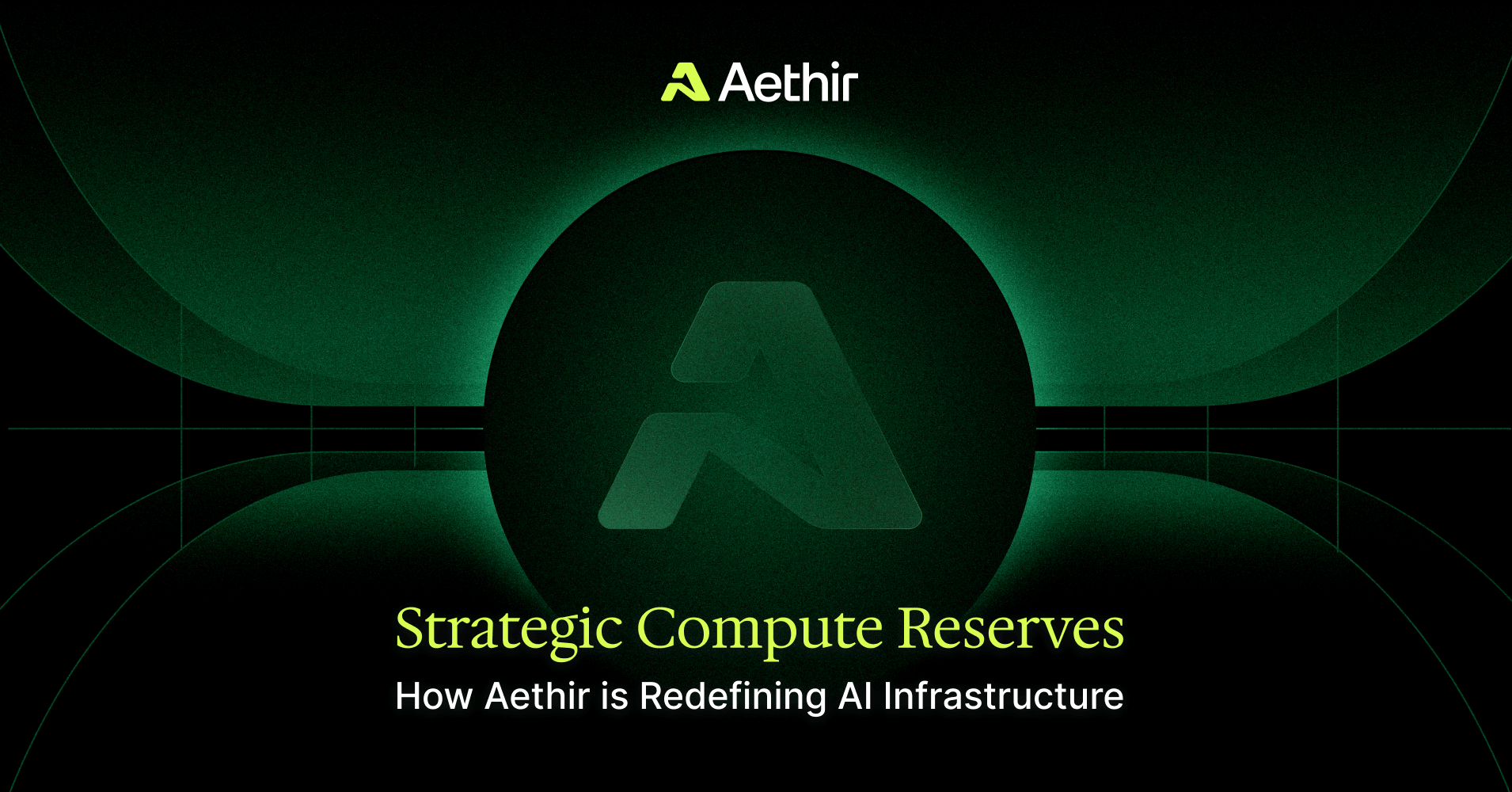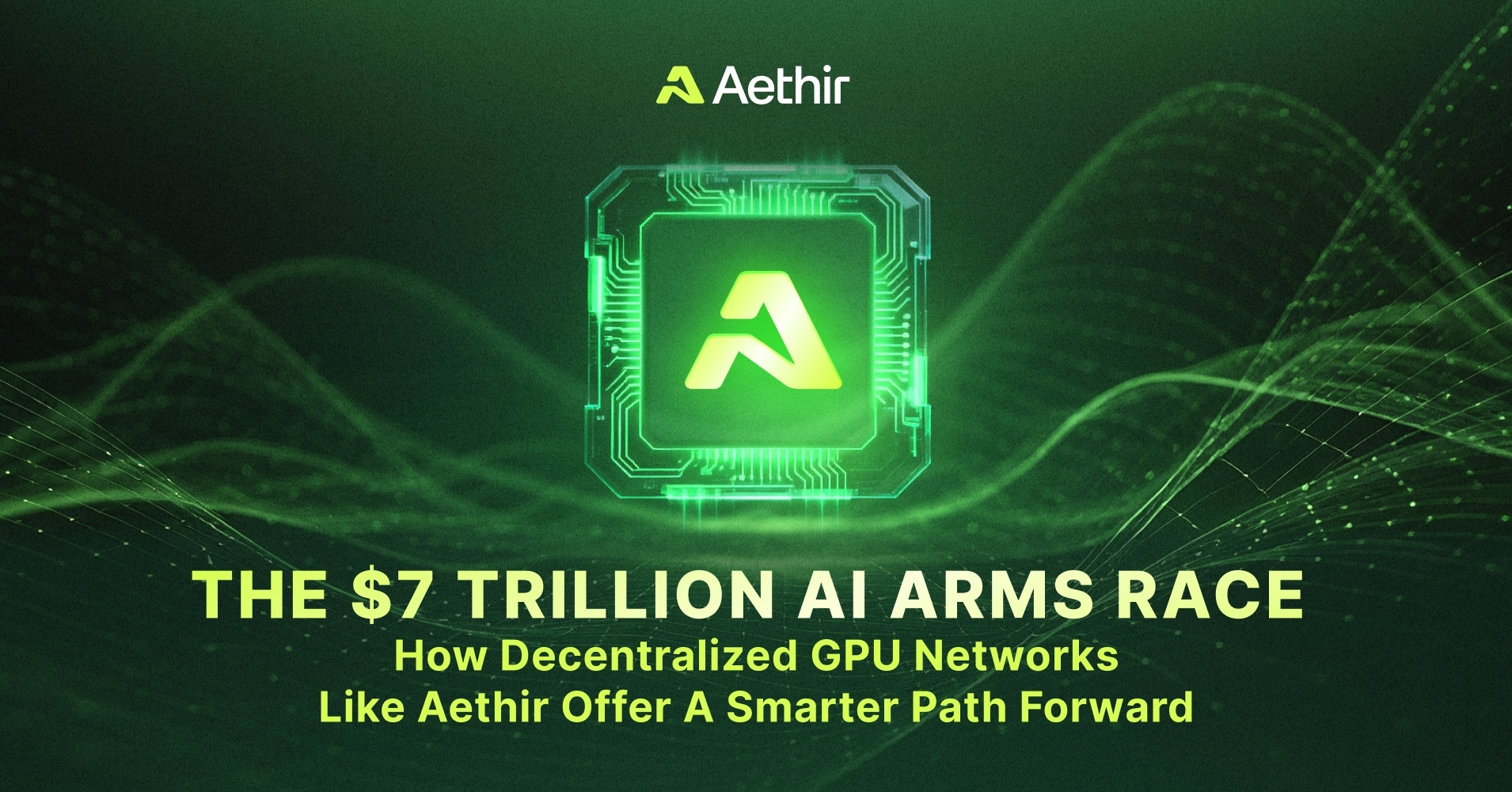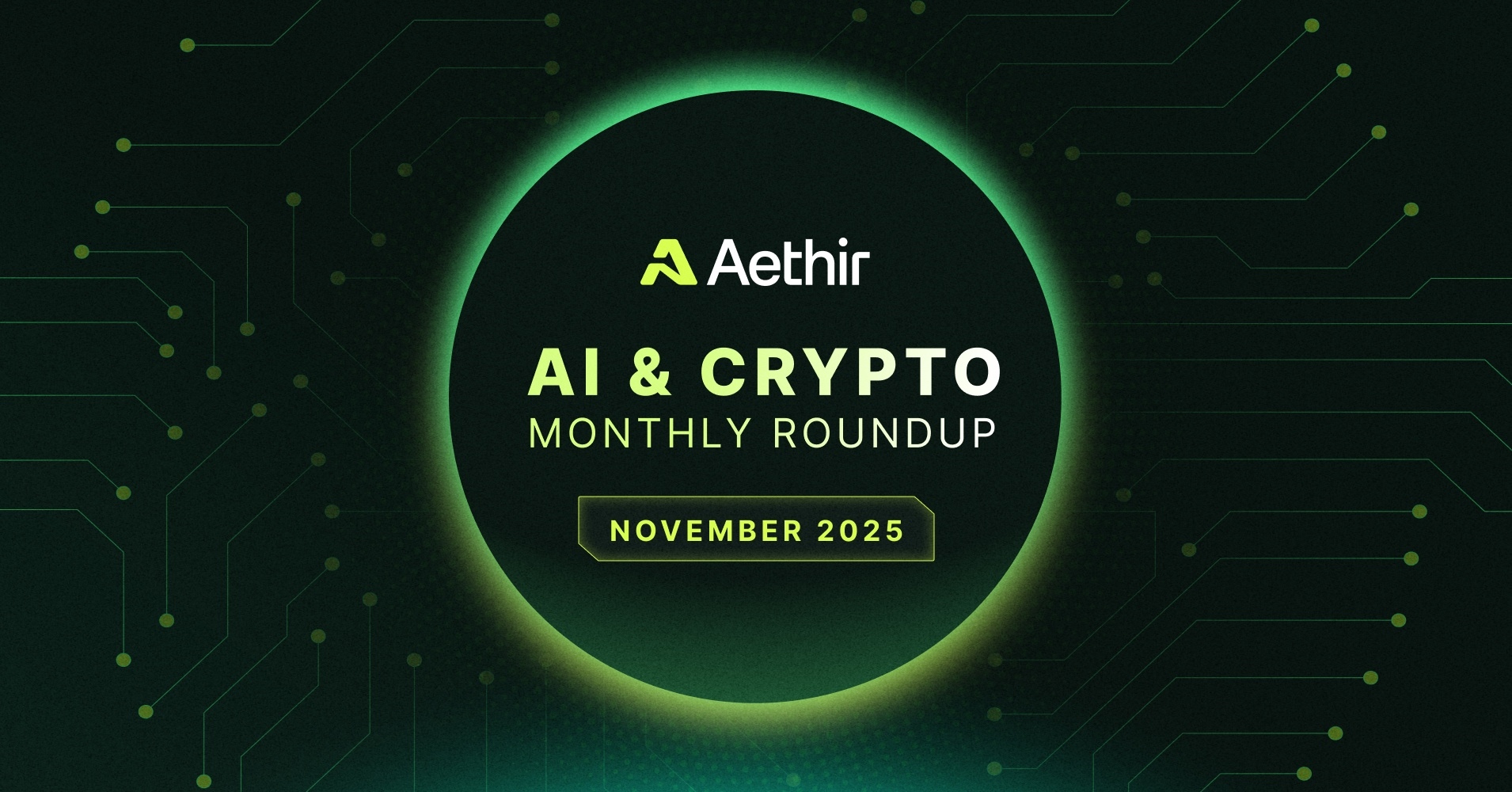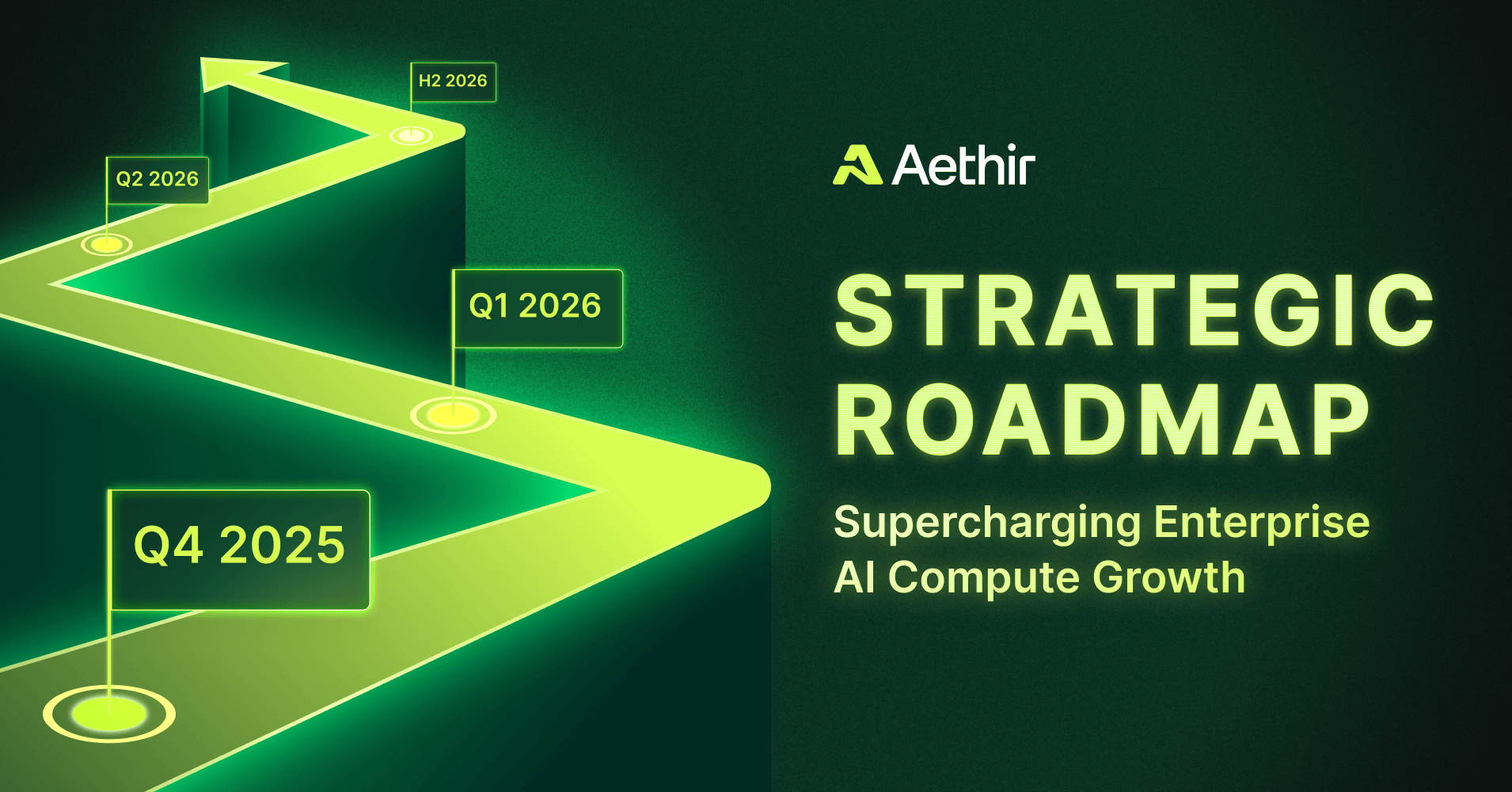When David Challenges Goliath: The Art of Strategic Positioning
In the pantheon of business strategy, few moves are as audacious as a small player challenging industry titans. Yet history shows us that when executed with precision, such challenges can reshape entire markets. Virgin Atlantic didn't compete with British Airways on fleet size, they competed on experience. Avis didn't challenge Hertz on market dominance, they embraced being number two and made it their strength.
In late September, Predictive Oncology's announcement of a $344.4 million digital asset treasury (DAT) centered on Aethir's ATH token marked the first time a Nasdaq-listed company announced that it will hold and actively manage tokens from a Decentralized Physical Infrastructure Network. The Aethir (ATH) DAT represents another such David-versus-Goliath moment. But this isn't just about corporate treasury management, it's about fundamentally reimagining how we think about computational infrastructure in an AI-driven world.
The Historical Precedent: From Petroleum to Processing Power
The concept of strategic reserves isn't new. Following the 1973 oil embargo, nations worldwide recognized that energy security wasn't just an economic issue. It was an existential one. The Strategic Petroleum Reserve, established in 1975, became America's insurance policy against supply shocks. China, Japan, and the European Union followed suit, recognizing that in times of crisis, access takes precedence over price.
Fast forward to 2025, and we're witnessing a similar recognition dawn in the technology sector. But this time, it's not barrels of oil that determine economic sovereignty. It's access to high-performance computing. The parallel is striking: just as oil powered the industrial economy, GPUs power the intelligence economy. And just as oil reserves protected against geopolitical volatility, compute reserves now protect against technological disenfranchisement.
The First Mover's Gambit: Why a Biotech Company Led the Charge
The choice of Predictive Oncology as the pioneer is fascinating from a strategic perspective. Before the announcement, Predictive Oncology spent the last two years trading as a penny stock with limited revenue and a history of quarterly losses. This wasn't Apple or Microsoft making this move; it was a company that reported just $2,682 in quarterly revenue.
This exemplifies what marketing strategist Mark Ritson calls "shadow salience", which is the ability of small brands to leverage famous competitors' positioning to find market gaps. Predictive Oncology didn't try to outbid tech giants for GPU allocation. Instead, they reimagined the acquisition model entirely. By becoming the first public company to hold DePIN tokens as treasury assets, they've created a new category where they're not competing. They're defining.
The market's reaction was immediate: shares surged more than 70% on Monday following the announcement of its digital asset treasury. This wasn't just a stock pop. It was validation of a new paradigm.
Beyond Corporate Giants: The Democratization Play
While existing analyses focus on enterprise adoption and institutional investment, there's a more profound shift occurring. Aethir's Strategic Compute Reserve model isn't just for Fortune 500 companies. It's a lifeline for the innovation economy's middle class.
Consider the startup building the next breakthrough in drug discovery, the research lab working on climate modeling, or the creative studio rendering the next generation of digital content. These organizations face an impossible choice: wait months for GPU access from hyperscalers, accept inferior hardware that compromises their work, or burn through capital on inflated spot market prices.
The Strategic Compute Reserve changes this calculus. By pooling demand and creating a secondary market for compute access, it transforms GPUs from a scarce commodity controlled by oligopolies into a tradable, accessible resource. Through Aethir's unique network mechanisms, ATH can also be converted into physical GPUs, providing a direct pathway from token exposure to productive compute capacity.
The Network Effect Multiplier: Why Timing Matters
Ritson's framework emphasizes that small brands need a disproportionate share of voice to compete. Aethir achieves this not through advertising spend but through network architecture. With more than $166 million in verifiable on-chain ARR, Aethir is among the most commercially scaled projects in the DePIN category. This isn't speculative value. It's an operational reality.
The timing of this launch coincides with three converging trends that existing analyses haven't fully explored:
The Talent Arbitrage: As AI talent disperses from big tech hubs to global locations, compute access becomes the limiting factor for innovation. A brilliant team in Eastern Europe or Southeast Asia can now compete with Silicon Valley if they have the GPUs.
The Regulatory Hedge: With increasing scrutiny on AI concentration and potential antitrust actions against cloud oligopolies, decentralized infrastructure provides regulatory optionality. Companies building on Aethir aren't just buying compute, they're buying independence from potential regulatory disruption.
The Sovereignty Imperative: Nations are awakening to the strategic importance of AI infrastructure. Just as countries wouldn't outsource their entire energy supply to foreign providers, they're beginning to question the wisdom of depending on American hyperscalers for AI compute. Aethir's global distribution across 93 countries and 200+ locations provides a sovereignty-preserving alternative.
The Contrarian Investment Thesis
From a pure investment perspective, the Strategic Compute Reserve represents a fascinating asymmetry. Traditional infrastructure investments require massive capital expenditure with long payback periods. Data centers cost billions and take years to build. But through the DAT model, investors gain exposure to infrastructure returns without infrastructure risks.
For each ATH token purchased by Predictive Oncology on the open market, Aethir Foundation will grant an additional 20% of ATH tokens. This isn't just a purchase. It's a multiplier effect that traditional infrastructure investments can't match.
Moreover, the appointment of Shawn Matthews, former CEO of Cantor Fitzgerald to Predictive Oncology's board signals something deeper than operational expertise. Cantor Fitzgerald's history, rebuilding after losing 658 employees on 9/11 is one of resilience in the face of existential challenges. Matthews understands that in times of crisis, preparation is key to survival.
The Ecosystem Catalyst: Beyond Direct Returns
What existing analyses miss is the ecosystem effect of Strategic Compute Reserves. When a company holds ATH tokens, they're not just securing their own compute needs, they're strengthening the entire network. Every staked token increases network security. Every transaction validates the model. Every successful workload attracts more providers.
This creates a virtuous cycle that traditional cloud providers can't replicate. AWS doesn't get stronger when a customer prepays for services. But Aethir's network literally becomes more robust. It's the difference between renting and owning, between being a customer and being a stakeholder.
The Warning Signs: What Critics Miss
Skeptics will point to Standard Chartered's caution that digital asset treasury companies could face a valuation squeeze as market net asset values continue to decline. This misses the fundamental difference between passive crypto treasuries and active compute reserves.
MicroStrategy holds Bitcoin as a speculative store of value. Tesla's Bitcoin purchase was a treasury diversification play. But Predictive Oncology's ATH holdings represent productive assets, tokens that can be converted into actual computing power, generating real revenue from real workloads. Proceeds from real workloads are reinvested to expand capacity and align incentives via ATH. The Aethir DAT is a critical step in building the compute economy, as the foundation of AI’s future.
This isn't financial engineering. It's an industrial strategy.
The Implications for Competitive Strategy
For companies evaluating their AI infrastructure strategy, the Strategic Compute Reserve model forces a fundamental reconsideration of build-versus-buy decisions. The traditional calculus assumed three options: build your own data centers (massive capex), rent from hyperscalers (vendor lock-in), or constrain your ambitions (competitive disadvantage).
Aethir introduces a fourth option: participate in the infrastructure layer without operating it. This is particularly compelling for companies that understand AI's importance but lack the scale to negotiate favorable terms with traditional providers. It's the difference between being a price taker and a price maker.
The Road Ahead: From Experiment to Standard
As more companies recognize compute scarcity as an existential risk, Strategic Compute Reserves will transition from innovative experiment to standard practice. Just as public companies now report their cash positions and marketable securities, future earnings calls will discuss compute reserves and infrastructure hedging strategies.
The question for leadership teams isn't whether to establish a Strategic Compute Reserve. The question is whether to move now while the model is nascent and advantages are asymmetric, or wait until it becomes table stakes and benefits are commoditized.
The New Balance Sheet Reality
Predictive Oncology's pioneering move represents more than a clever financial structure. It's a recognition that, in the AI era, access to compute is as fundamental as access to capital. Companies that secure reliable, cost-effective GPU capacity will have the foundation to innovate. Those that don't will find themselves perpetually constrained, watching competitors with better infrastructure access capture markets they could have won.
The Strategic Compute Reserve isn't just a hedge against scarcity. It's a bet on abundance. It's a belief that democratizing access to AI infrastructure unlocks innovation that centralized control would never permit. It's a recognition that in a world where intelligence is the ultimate competitive advantage, controlling the means of computation is controlling the means of production.
As we stand at this inflection point, the lesson from history is clear: those who recognize resource shifts early and position accordingly don't just survive transitions, they define them.
Aethir and Predictive Oncology have shown the path. The question now is who will follow, and who will be left behind in the GPU-constrained past while others race toward the compute-abundant future.






